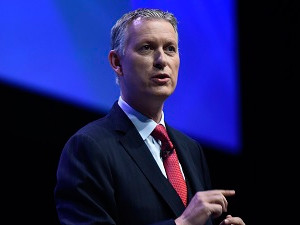
Cost optimisation is pivotal to the success of technology organisations and businesses in South Africa and around the world.
So said Peter Sondergaard, a senior vice president at Gartner Research, speaking at the research company's annual gathering in Cape Town - Gartner Symposium/ITxpo 2016.
He said while it was wonderful to chart the evolution of technology, there were always 'interesting challenges' to overcome, and the majority of public and private sector organisations in South Africa were feeling budget pressures.
Successful CIOs must be capable of delivering continuous optimisation of cost in IT, he said, adding that even if the business was doing well, the CIO needs to move cost from existing infrastructure from back office systems to be able to fund the running of innovation that needed to happen at the forefront of the business.
He said in Gartner's experience, cost optimisation is what most CIOs are focusing on, and they need to understand how to do this in the context of 'how does it fund the future?'
Running parallel to this, said Sondergaard, was the question of optimising infrastructure.
He said the volatility in the technology provider space was bringing pressure to bear on the end user in how they designed robust and stable infrastructure - for example, HP's breakup of the company or the future strategy of Dell EMC.
Islands of software platforms
Turning to the Internet of things (IoT), Sondergaard said Gartner wanted to pivot from the usual talk of 'lightbulbs and all sorts of things connected to the Internet'. While this was interesting, what is really important about the IoT wave, is the proliferation of what he termed 'islands of software platforms' that were emerging from startups and software developers.
He said this reminded him of what the ERP market looked like in 1992. "In 1992 there were hundreds of ERP providers. They all had particular functional capability and the job of the CIO was the job of integration."
In Gartner's experience, cost optimisation is what most CIOs are focusing on, and they need to understand how to do this in the context of 'how does it fund the future?'
Back then, no one had a platform that was fully integrated for a particular industry, and the industry players had spent 15 years fretting over whether to develop their own platform, or buy into 'some vendor's vision'.
Sondergaard said he had looked at what people were searching for on gartner.com, and the top term was was 'IoT', closely followed by blockchain, neither of which were in the top search terms a year ago.
"What you're seeing is the acceleration of speed of change - the necessity to incorporate new technologies faster."
CEOs now understand that the customer's experience is central to their business's success.
With regard to the technology user's experience, he said this had become incredibly important and that technologies associated with UX were critical for businesses.
The customer's experience, which incidentally applied to both the employee and the customer, was fast becoming 'a CEO topic' and CEOs now understand that the customer's experience is central to their businesses' success, he added.
Share